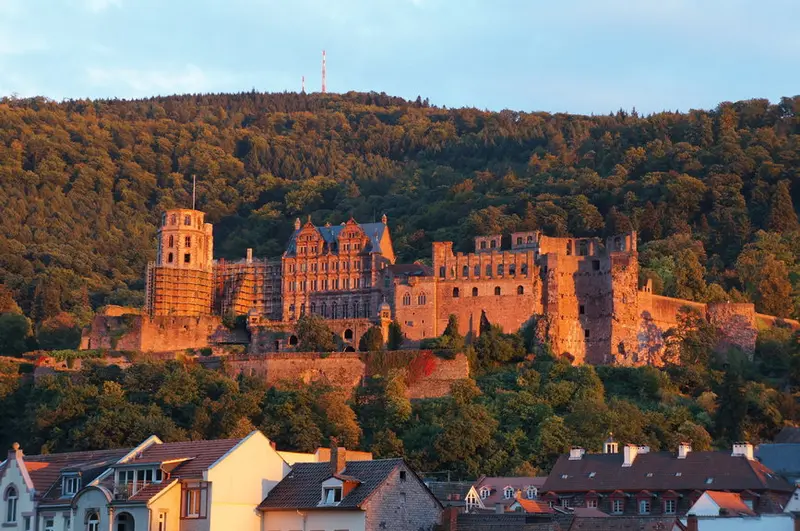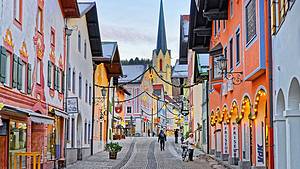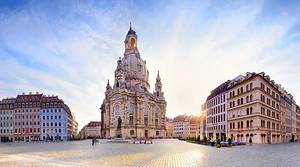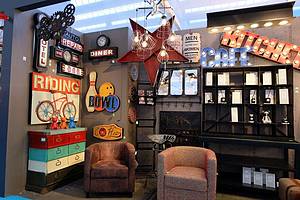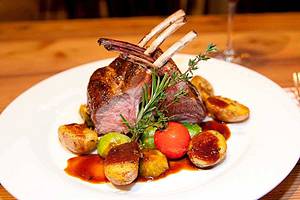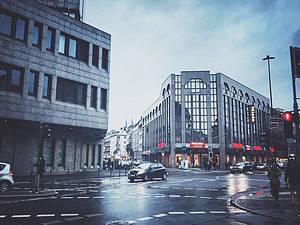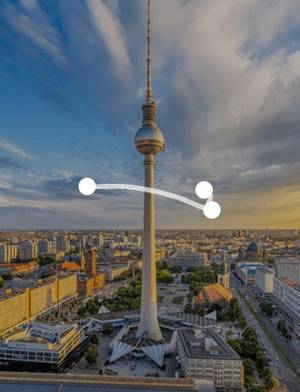Heidelberg Humanities and Arts 3-day Parade
3 cities |
18 attraction(s) |
total distance 65
km
 TIPS
TIPS
Day1
Day2
Day3
Day1: Frankfurt
6 attraction(s) ·
9 km
1
The Städel Museum, funded by the banker and businessman Städel in Frankfurt, is the oldest museum foundation in Germany and one of the country's most important art museums. The museum's collection traces the complete history of European art from the early 14th century to the present, focusing on the Renaissance, Baroque style, and early modern art. The collection includes 3,000 paintings, 600 sculptures, over 4,000 photographs, and more than 100,000 drawings. Selected works include pieces by Cranach, Dürer, Botticelli, Rembrandt, Vermeer, Monet, Picasso, Klee, Beckmann, and Giacometti.
In addition to its outstanding collection, the museum's high-level activities in research, exhibitions, and education ensure its prominent position among many international museums. As Germany's most important civic cultural foundation, the Städel also has broad public participation. As a milestone institution established by citizens, it celebrated its 200th anniversary in 2015 and is currently dedicated to the development of the digital field.
3
km
2
Frankfurter Romer
The Roman Square is the town hall square in Frankfurt since the Middle Ages. Located in the center of the old town of Frankfurt, north of the Main River bridge, the west side is the town hall, the southwest side is the Weitheim residence, a beautiful residential building in the late Renaissance style (1600). The south side is the St. Nicholas Church built in the 13th century, made of red sandstone. The east side is the half-timbered houses built between the 15th and 18th centuries. The north side is a stone house built in the style of an Italian palace (1464). In the center of the square stands the Justice Fountain, built in 1543. The Frankfurt Cathedral, the birthplace of the city, is just 200 meters to the east. In 1944, the square was heavily bombed by the British Air Force and was almost completely destroyed, but was rebuilt after the war.
1
km
3
This is the birthplace of the famous German poet Johann Wolfgang von Goethe, beloved by the people (August 28, 1794). He spent his youth here and wrote the famous "The Sorrows of Young Werther" and the opening of "Faust" here. Adjacent to Goethe's former residence is the Goethe Museum.
The original residence, built in the 17th century, was destroyed in the flames of World War II but was later rebuilt according to its original design. The furnishings in the kitchen, bedroom, and living room of the residence reflect the artistic style of residential decor in the late Baroque period. Goethe's study is located on the second floor, maintaining the appearance during his lifetime.
The Goethe Museum exhibits a large number of prints, paintings, and busts from the late Baroque period, classical, romantic, and Biedermeier styles of the 18th and 19th centuries. These works vividly depict Goethe's relationship with artists such as Johann Heinrich Füssli, Caspar David Friedrich, and Frankfurt painters. The public organization, Free German Cathedral Council, is responsible for maintaining Goethe's parents' residence, the Goethe Museum, the Poet's Archive, and a research library where visitors can see important and valuable literary documents and prints.
2
km
4
The Frankfurt Old Opera House, built in 1880, is a typical example of Italian Renaissance architecture. The original building was destroyed in World War II and was reopened to the public in 1981 after being rebuilt. It offers over 340 performances every year, not only limited to operas, but also includes performances by orchestras and more.
3
km
5
The towering bank buildings that reach into the sky have become the unique symbol of this city with their futuristic architectural style. Here is the banking district located between the train station area (Bahnhofsviertel), exhibition center (Messe), and old opera house (Alter Oper) - the place where Frankfurt's economy thrives. Two high-rise buildings built in the 1960s on Bockenheimer Landstraße have now succumbed to other "giants", earning Frankfurt the nickname "Mainhattan". The Deutsche Bank Tower and the Trade Fair Tower are hailed as classics, with the former having two towers symbolizing "lenders and borrowers" and the latter being an excellent example of postmodernism.
2
km
6
The Frankfurt Exhibition Center consists of ten halls with a total area of 400,000 square meters, of which the exhibition area is 263,000 square meters, making it the third largest exhibition hall in Germany. Over 50 exhibitions are held here every year, including the largest in the world in terms of book fairs, automotive shows, and spring and autumn consumer goods fairs. Important exhibitions include the Consumer Goods Fair, the International Automotive and Parts Exhibition, and the Frankfurt Book Fair.
Day2: Heidelberg
7 attraction(s) ·
9 km
1
The official name of the old bridge is Karl-Theodor Bridge, named after the elector who built this Baroque-style stone bridge in 1788. It is the ninth bridge in this location since ancient Roman times and is the oldest bridge over the Neckar River in the Heidelberg area. Most of the time, the bridge is a pedestrian bridge with a view of the castle. The sculpture at the southern end of the bridge is of Elector Karl Theodor, and the one at the northern end is of the goddess of wisdom (to celebrate the elector's support for art and science). The southern end of the bridge is the bridge gate, and the two 28-meter-high round towers that date back to the 15th century are the oldest part of the old bridge. The bridge gate was originally used to collect "bridge tolls".
1
km
2
The Holy Spirit Church on the Market Square (Marktplatz) is the largest and most important church in the old town of Heidelberg. It is an ancient and elegant Gothic red brick building, built between 1344 and 1441, with a history of nearly seven hundred years. The original tombs of former kings and electors were destroyed during the War of the Grand Alliance. The only remaining tomb is that of the builder of the church, Elector Rupert III. The interior of the church is very simple. From 1706 to 1936, a barrier was erected in the middle of the church, separating Catholics and Protestants during worship. Now, it is a Protestant church. There are many souvenir stands around the exterior walls of the church, which is also a traditional sight on the Market Square.
3
km
3
Heidelberg Castle, built with red sandstone on the blue throne mountain (Königstuhl), overlooks the old town of Heidelberg and the Neckar River at the foot of the mountain. The castle was built in the 13th century and was struck by lightning in 1537 and 1764, and suffered severe damage during the Thirty Years' War and the War of the Grand Alliance, gradually forming its current layout. The biggest highlight inside the castle today is the world's largest wine barrel (Grosses Fass), which is the fourth barrel of similar size repeatedly built inside the castle due to war reasons. The current wine barrel was built in 1751 and can hold a total of 221,726 liters of wine. There is also a so-called "small wine barrel" (Kleines Fass) next to it. Inside the castle, there is also a medical museum displaying pharmacy from centuries ago. In the palace courtyard, there is a red triumphal arch, which, though small in scale, is quite romantic as it was built overnight and given as a 20th birthday gift to Friedrich V's wife in 1615.
2
km
4
Built between 1901 and 1905, the library houses over 2 million volumes, including precious handwritten manuscripts from the 14th century. Some rare books and artworks are also exhibited in the exhibition room on the upstairs corner.
1
km
5
Heidelberg University, officially known as Ruprecht-Karls-Universität Heidelberg, was founded in 1386. It is the oldest university in Germany, and the third oldest in Europe. It has evolved from theology, law, medicine, and philosophy to currently having twelve faculties and nearly 30,000 registered students. The university square is the core of Heidelberg University, with many university-related buildings, departments, and the former residences of historically important scholars in the vicinity. Adjacent to the university square, there is the Old University (Alte Universität), built in the early 18th century, and the New University (Neue Universität), built in the early 20th century. Not far from the square, at Plöck 107, is the university library, a beautiful building combining German and new art styles, with red brick and gold accents. It also houses a collection of precious books that are freely exhibited.
1
km
6
Main Street is the most important street in Heidelberg's old town. It is a pedestrian-only area that stretches from Bismarckplatz in the west to Karlsplatz in the east. This 1.6-kilometer-long pedestrian street is home to the main shopping and dining establishments in the old town and is also one of the longest pedestrian streets in Europe. The route of Main Street is paved with oval cobblestones and is narrow and winding. It dates back to the Middle Ages, but most of the buildings on either side were destroyed in the late 17th-century wars of the Grand Alliance during the French invasion. The buildings that were later rebuilt are mostly in the Baroque style. Knight's Inn (Romantik Hotel Zum Ritter) at 178 Main Street, built in 1592, is one of the few surviving buildings and is an outstanding example of late Renaissance architecture. It is also the oldest building on Main Street.
4
km
7
The Neckar River is an important tributary of the Rhine River that originates in the Black Forest and flows entirely within the state of Baden-Württemberg. It passes through picturesque towns such as Tübingen, Stuttgart, and Heidelberg before joining the Rhine River in Mannheim. The Neckar River runs through the heart of Heidelberg, adjacent to the old town, creating a perfect picture with the old bridge and castle. Both the north and south banks of the river have riverside promenades for walking, especially the north bank with its lawns and gardens, making it a great place for relaxation and enjoying the scenery. For a deeper immersion into local life in Heidelberg, one can also explore the large lawn west of Theodor-Heuss Bridge on the north bank, which is a favorite recreational spot for residents on sunny days.
Day3: Mainz > Frankfurt
5 attraction(s) ·
49 km
1
Nine splendid stained glass windows, created by the Russian Jewish master artist Marc Chagall in his twilight years, fill this place with a sense of mystery and a medieval texture, serving as a symbol of reconciliation between Judaism and Christianity.
3
km
2
A specially crafted organ platform and exquisite ceiling murals created by Johann Baptist Enderle.
3
km
3
One of the most magnificent churches in Germany. The archbishop's memorial tombstone and the church museum house many precious artworks.
38
km
4
As one of the host cities of the 2006 World Cup, football holds an unbeatable position in the hearts of the people of Frankfurt. It often hosts large football matches or other performance events. The predecessor of the Deutsche Bank Arena was the legendary Frankfurt Forest Stadium. It is a part of German sports history and has always been the focus of life in the region. It can accommodate up to 55,000 spectators and is a multifunctional venue. The exact circumference is 860 meters, the length is 210 meters, and the width is 190 meters. There are no obstacles such as columns, so you can see the field directly.
7
km
5
The museum exhibits the collections of various cultures from around the world over the past 6,000 years.








